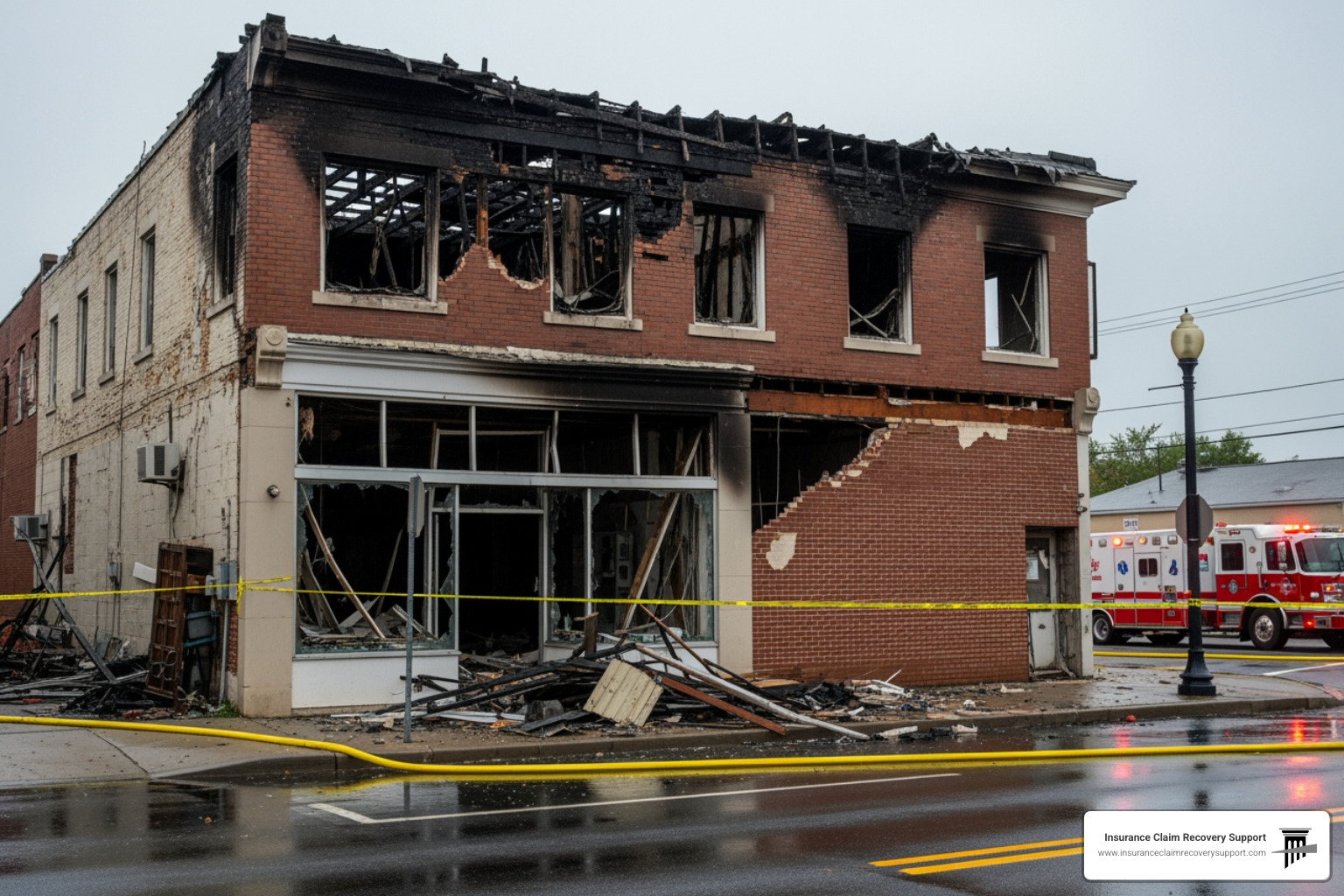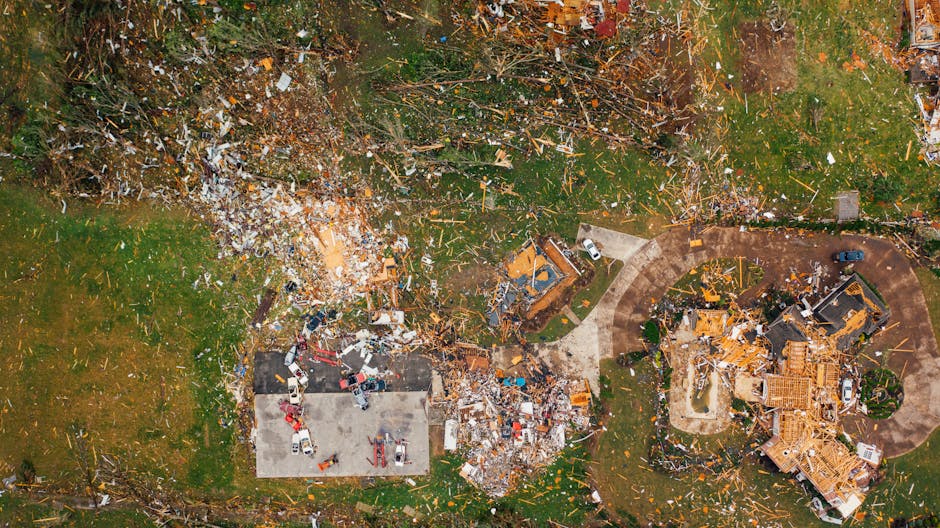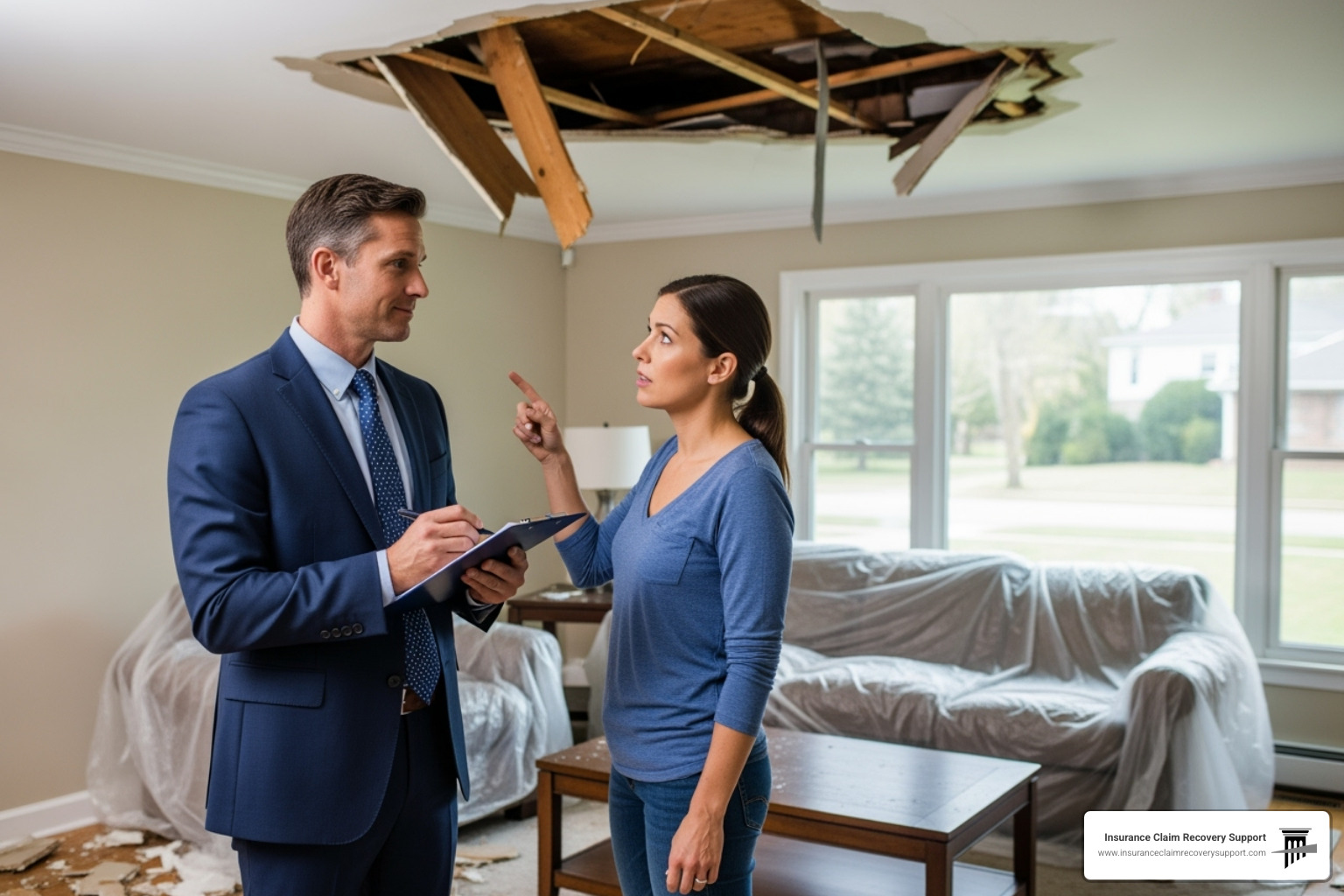The Electrifying Impact of Lightning on the Ground
Lightning strikes can leave an indelible mark on the ground, creating astonishing phenomena like fulgurites, as well as dangerous fires and electrical currents. When lightning hits the ground, the ground after lightning strike experience can vary but often includes:
- Formation of Fulgurites: These are glassy tubes formed by intense heat welding soil and sand into a unique rock.
- Creation of Lichtenberg Figures: Intricate, tree-like patterns scorched into the soil.
- Causing Ground Fires: The intense heat can spark fires, leading to significant property damage.
I’m Scott Friedson, CEO at Insurance Claim Recovery Support LLC. With over 500 large loss claims settled, I’ve seen the numerous effects of lightning strikes—including those surprising signs on the ground. Let’s dig into what happens and why it’s crucial to understand the impact.
What Happens When Lightning Strikes the Ground?
When lightning strikes the ground, it releasees an immense electric discharge that can have several effects on the ground surface. Let’s break down what happens and why it matters.
Formation of Fulgurites
One of the most fascinating outcomes is the creation of fulgurites. These are glassy, tube-like rocks formed when lightning fuses dirt and clays into silicas. Imagine a natural, high-energy event turning soil into a unique mineral. Fulgurites can be found worldwide, but they’re relatively rare. They often have a convoluted shape, reflecting the lightning’s path through the ground.
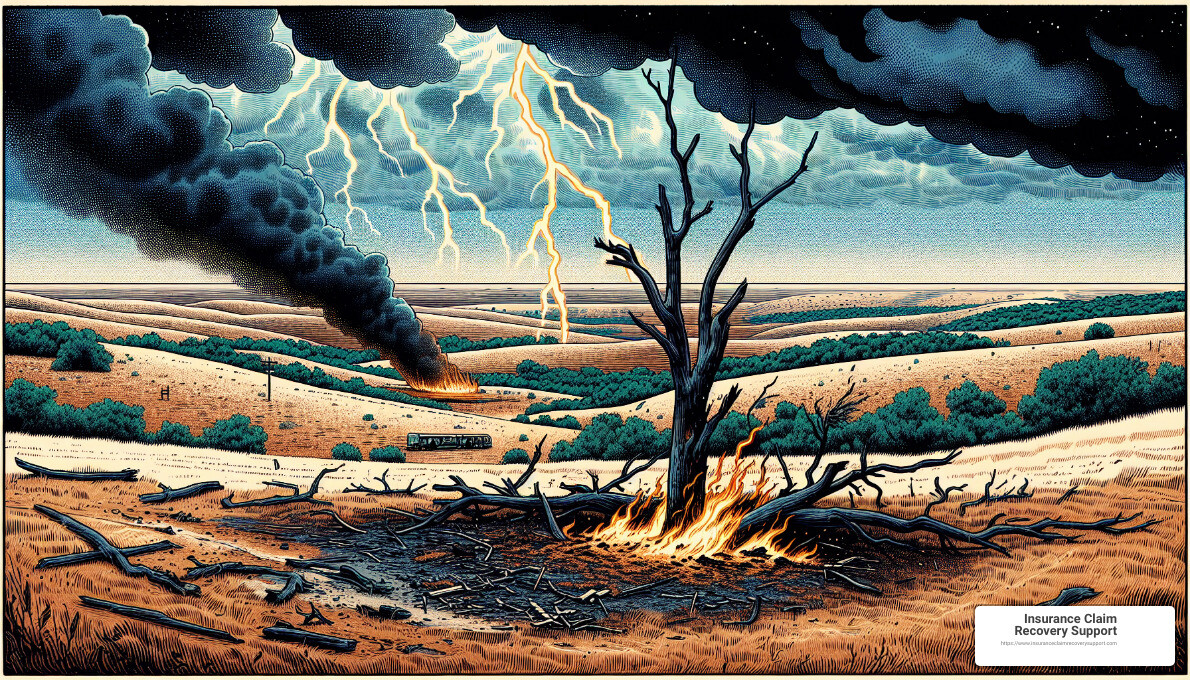
Ground Current and Its Effects
Ground current is another critical effect of lightning striking the ground. When lightning hits, the electric discharge spreads out along the ground surface, creating what’s known as step voltage. This can be deadly for both humans and animals.
Farm animals are particularly vulnerable because of the distance between their front and back legs. The larger the span, the higher the risk of a fatal incident from ground current. For humans, lying on the ground increases the risk of injury or death because the distance between contact points (head and feet) is greater than when standing.
Lichtenberg Figures
Lightning often leaves behind intricate, tree-like patterns called Lichtenberg figures. These appear on the ground, showing the paths the electric arcs traveled. They are not just beautiful but also telltale signs of a lightning strike.
Ground Scars and Explosions
The intense heat from the lightning can also cause ground explosions. These explosions might blast small craters in sandy soil or pavement, leading to ground scars. Grass and other vegetation along the path of the lightning may die, creating visible marks on the landscape.
Understanding these effects is crucial for safety and property protection. Next, we’ll discuss how to stay safe during a lightning storm, both indoors and outdoors.
Visible Signs of Lightning Strikes on the Ground
When lightning strikes the ground, it leaves behind distinct and recognizable marks. These signs can help you identify where the strike occurred and understand the potential risks involved.
Lichtenberg Figures
One of the most fascinating and beautiful signs of a lightning strike is the Lichtenberg figure. These intricate, tree-like patterns are formed by the intense heat and electrical discharge of the lightning traveling along the ground.
- Tree-like Lesions: These figures resemble the branches of a tree or the veins of a leaf.
- Feathering and Ferning: The patterns often have a feathered or fern-like appearance, spreading out in various directions.
Lichtenberg figures can be found on various surfaces, including grass, pavement, and even the skin of people who have been struck by lightning. They are not just visually striking but also a clear indicator of where the lightning has dissipated its energy.
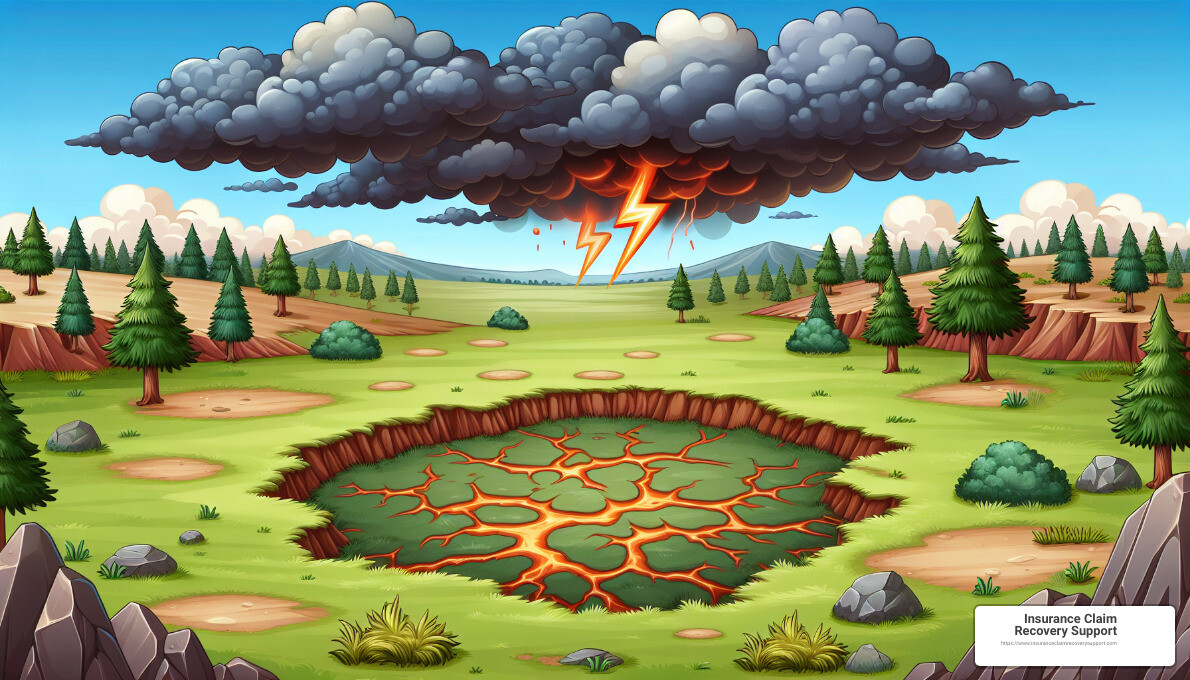
Ground Scars and Explosions
The heat and force of a lightning strike can cause significant damage to the ground. Here are some of the visible signs:
- Ground Explosions: The intense heat can vaporize moisture in the soil, causing small craters or ground explosions. These explosions leave behind ground scars.
- Grass Death: Vegetation along the path of the lightning often dies, creating visible lines or patches of dead grass.
- Scar Formation: These scars can be long-lasting, marking the landscape for years.
Tree Damage
Trees are often struck by lightning because of their height. The damage to trees can be severe and includes:
- Burn Marks: The lightning can cause burn marks on the bark.
- Splintering: The intense heat turns the water inside the tree to steam, causing the bark and wood to splinter or explode.
- Branch Loss: Large branches may be blown off, and the tree can be left with significant structural damage.
Understanding these signs can help you assess the damage and take necessary precautions.
Next, we’ll discuss how to stay safe during a lightning storm, both indoors and outdoors.
Ground After Lightning Strike: Safety and Precautions
When lightning strikes the ground, it can create dangerous conditions. Here are some safety tips to keep you safe indoors and outdoors.
Indoor Safety Measures
1. Stay Away from Plumbing and Water:
Metal pipes can conduct electricity. Avoid using sinks, showers, and bathtubs during a storm.
2. Avoid Electrical Equipment:
Don’t use wired devices like desktop computers or gaming consoles. Lightning can travel through electrical systems.
3. Keep Away from Concrete Floors and Walls:
Concrete often contains metal rods that can conduct electricity. Stay away from concrete surfaces during a storm.
4. Unplug Electronics:
Unplugging devices can prevent them from being damaged by a power surge.
Outdoor Safety Measures
1. Seek Shelter:
The safest place during a storm is indoors. If you can’t get inside, avoid open areas.
2. Avoid Tall Objects:
Trees, poles, and other tall objects attract lightning. Don’t take shelter under them.
3. Stay Low:
If you’re caught outside, crouch down with minimal contact with the ground. Don’t lie flat.
4. Protect Farm Animals:
Farm animals are at risk due to their long body span. Move them to a shelter if possible.
5. Avoid Metal Objects:
Stay away from metal fences, poles, and other structures that can conduct electricity.
Lightning can be deadly. Following these safety tips can help you stay safe during a storm. Next, we’ll answer some common questions about the effects of lightning on the ground.
Frequently Asked Questions about Ground After Lightning Strike
What is the Ground Effect of Lightning?
When lightning strikes the ground, it doesn’t just stop there. The electric discharge spreads out along the ground surface, creating something called ground current. This current can be deadly, especially to animals and humans.
Ground current travels outward from the strike point, and the voltage decreases with distance. This drop in voltage is known as step voltage. Farm animals are particularly vulnerable because their front and back legs are far apart, making them more likely to experience a dangerous voltage difference.
Does Lightning Make a Mark on the Ground?
Yes, lightning often leaves visible marks on the ground. These marks can take several forms:
- Lichtenberg figures: These are intricate, tree-like patterns created by the intense heat of the lightning. They form when the lightning arcs travel just below or along the ground surface.
- Burn marks: The intense heat can scorch the ground, leaving behind blackened or charred areas.
- Ground scars: Sometimes, lightning can blast small craters or trenches in the ground, especially in sandy or loose soil.
These visible signs are not just fascinating; they can also be crucial for identifying where a lightning strike occurred.
Can Lightning Strike the Same Place Twice?
Absolutely, lightning can strike the same place more than once. This often happens with tall objects like trees, towers, or skyscrapers. These objects are more likely to produce an upward channel that connects with the downward lightning strike.
Sometimes, lightning strikes the same spot due to a statistical fluke. With millions of strikes happening each year, it’s bound to hit the same place occasionally. Other factors like the ground conductivity, moisture content, and presence of metal objects can also make a location more prone to repeated strikes.
Understanding these aspects can help you better prepare and protect yourself and your property from lightning strikes. Stay tuned as we dive deeper into more common questions about lightning and its effects on the ground.
Conclusion
At Insurance Claim Recovery Support LLC, we understand how overwhelming dealing with property damage from lightning strikes can be. From fulgurites to ground currents and Lichtenberg figures, the aftermath is complex and often costly. We specialize in navigating these challenges, ensuring that you receive the compensation you deserve.
Property Damage Claims
Lightning strikes can cause significant damage, from ground explosions to structural fires. Our team of experts helps you document the damage accurately, making your property damage claim process smoother and more effective. We know the intricacies of insurance policies and will fight for your rights to ensure you get a fair settlement.
Lightning Strike Recovery
Recovering from a lightning strike involves more than just repairs. It includes understanding the risks, documenting the damage, and dealing with insurance companies. We provide comprehensive support throughout this process, helping you restore your property and peace of mind.
Texas Locations
Texas is particularly prone to lightning and storm damage. Whether you’re in Austin, Dallas, Fort Worth, San Antonio, Houston, or any other Texas city, we have extensive experience dealing with local insurance companies. We understand the specific challenges Texans face and are here to help you steer them.
For more details on how we can assist you with your property damage claims, visit our service page.
When lightning strikes, you’re not alone. We’re here to light the way to recovery.


